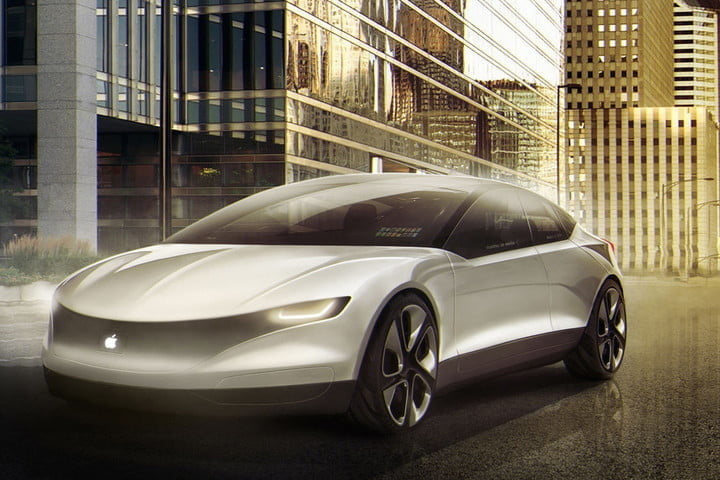10 Interesting Facts About the Apple Car Project
Automated driving systems have fascinated scientists and engineers since the 1920s. What started as small semi-automatic devices in manual cars has grown to change into fully automated or self-driving vehicles. Autonomous vehicles are meant to transform transportation, such that it becomes intelligent, convenient, and revolutionary. With several companies around the world investing in self-driving car development projects, they are not a thing of the future anymore. Apple, the smartphone and PC giant from Silicon Valley, has recently announced Apple Car Project Titan – its independent, autonomous car development projects.
With this project, Apple hopes to bring the collaboration of artificial intelligence and the automobile systems to justice. As a brochure from the company points out, the project is a continuation of Apple’s interdisciplinary vision of technology and liberal arts.

Though the company remained relatively tight-lipped about details of its car project, some of its basic features were revealed in the past two years because of government regulations. Here are 10 of the Apple car project is most impressive characteristics.
1. Enhancing Driving Experience:
Various statements from Apple point out its desire to make AI and machine learning more approachable and intuitive. For decades the brand has been investing substantially in automation development. While initiating project Titan, Apple aimed to enhance the driving experience of modern drivers. The fundamental goal of the Apple car project is to integrate safety and mobility with societal benefits, something that can only be achieved with a personalized approach to machine learning.
2. Who Tests Prototypes:
Apple has ensured rigorous testing of the vehicles while they are in development to erase flaws and ensure maximum user safety if or when these cars hit the market. For testing prototypes, an operator and a safety driver sitting inside the vehicle. The operator observes the working of the automated driving systems installed in the car and informs the safety driver of the car’s upcoming driving decisions.
The safety driver monitors the road and is eligible to take control of the vehicle manually when required. The operator, too, can shut down the ADS systems with a simple touch on the screen.
3. Smart Sensing:
Apple car prototypes are equipped with world-class LiDAR, radar, and cameras to monitor road conditions and surrounding objects and determine the position of the vehicle. A high-resolution 360 degrees 3D coverage is achieved with these devices.
4. Smart Planning:
Any automated driving system is incomplete without a planning system that can determine the future positions and orientations of the surrounding objects to plan the next movement of the car. Apple is planning to achieve this with comprehensive ADS that can make smart decisions while keeping the driver informed of them.
Also Read: 7 Autonomous Vehicle Myths Debunked
5. Acting Components:
Using the data from sensing and planning systems, the car controls driving features like steering, brakes, and propulsion. The ADS of Apple cars are supported by software and hardware components that are capable of transferring control to the driver immediately, ensuring maximum safety.
6. Loop Operation:
The three autonomy units – sensing, planning and acting work in a comprehensive closed-loop in Apple cars. This loop repeats multiple times in a single second for the quick response and smooth functioning of the car. This loop design is used in many AI systems around the world excellently weaves together sensing, planning, and execution mechanisms.
7. Incomplete Automation:
Apple cars are not fully automated, i.e., the driver can override all of the sensing, planning, and executions commands of the car at any time. For example, the ADS’ decision to change the vehicle’s direction can be overturned easily by the driver.
8. Maximum Crash Safety:
Apple has maintained safety as its priority while developing its autonomous cars. The vehicle has external safety equipment mounted onto it to protect pedestrians and cyclists in the event of a crash. For driver protection, seatbelts and airbags can operate uninterrupted by any hardware or software modifications of the ADS.
9. Testing and Installation:
Apple subjects all its autonomous cars to multiple crash tests and simulations. Any hardware or software being deployed in the car is tested extensively for hazardous features. Malfunctions that arise during testing are addressed immediately, and the car is re-introduced to closed-course proving ground testings and simulations. All the software is installed incrementally into the ADS, and the systems undergo holistic verification.
Before each ride, tire pressures and the ADS systems are checked thoroughly to avoid mishaps. Moreover, data is recorded from crash simulations to improve design flaws and malfunctions. Such extensive care during manufacturing demonstrates Apple’s commitment to passenger safety and societal enhancement.
10. Valuing User Privacy:
Apple has gathered and kept consumer trust for decades, thanks to its sensitive approach to user privacy in all its devices. Even with Apple cars, your privacy does not get violated. The car collects only the bare minimum data required to improve user experience. Principally, any mobility data collected is not used to re-route the vehicle or advertise specific businesses.
With such promising features already in place in the prototypes of Project Titan, hopes are soaring for Apple’s latest brainchild. Customers eagerly await an autonomous car that is both intelligent and sensitive, while ensuring maximum safety for both the driver and the pedestrians.
Hopefully, the Apple Car project will lay the foundations of a revolution in autonomous driving technology and broaden future perspectives just as the company’s other devices have.
